The History and Evolution of Native American T-Shirts
Discover the history and evolution of Native American T-shirts — from cultural expression and tribal identity to modern fashion that celebrates heritage and pride.
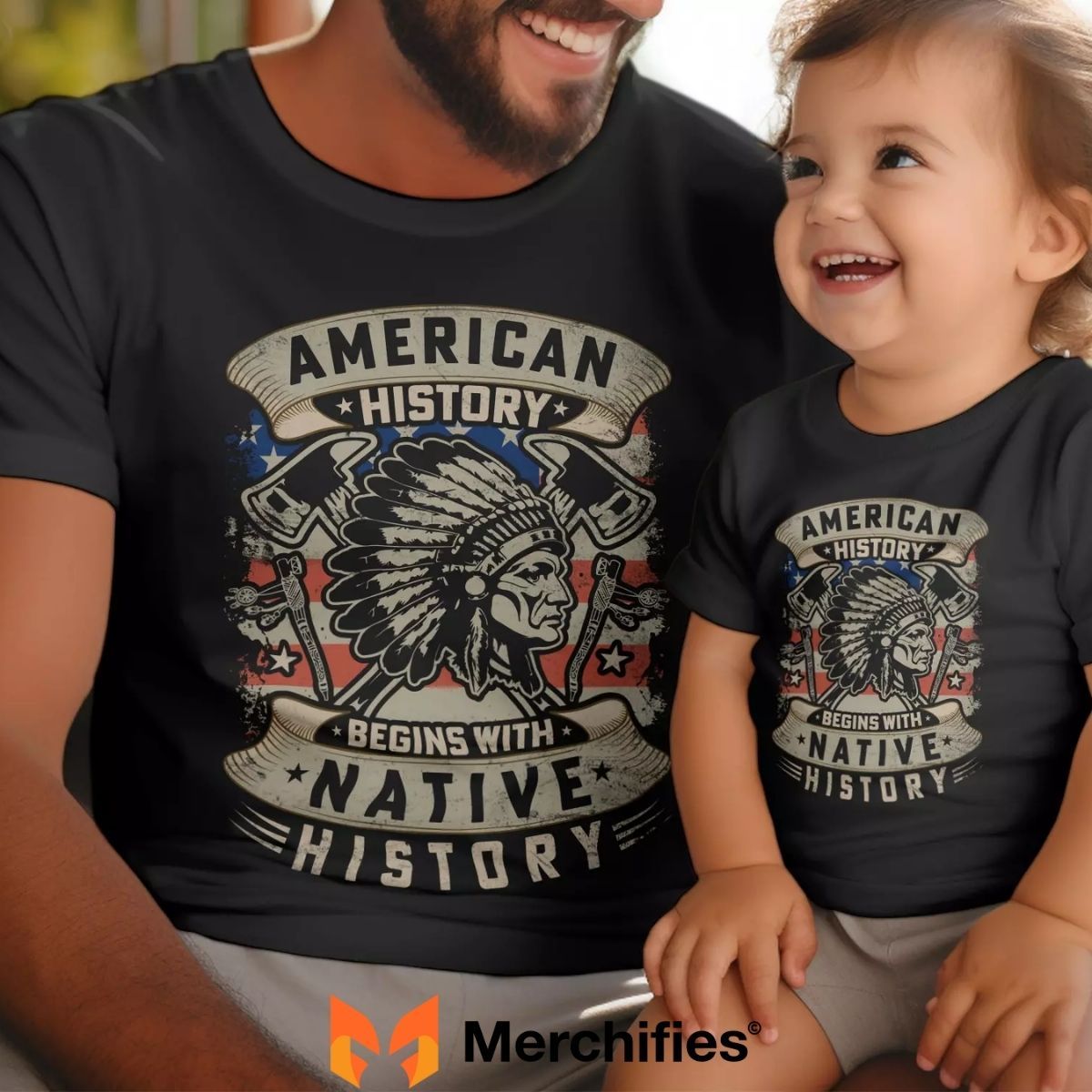
Blog Post Contents
The visual power and profound cultural significance of Indigenous clothing are undeniable. Each stitch, bead, and pattern tells a story, carrying centuries of tradition, identity, and spirituality. This article delves into the vast, diverse, and evolving history of Native American shirts and the broader origin of indigenous clothing designs, emphasizing their deep roots in identity, spirituality, and practicality. Far more than just garments, these pieces are living testaments to vibrant cultures, extending well beyond the modern concept of a "shirt." As an expert in this field, I, Evelyn Sage, am delighted to share insights into this intricate tapestry, guiding you through its evolution from pre-contact forms to compelling modern interpretations.
Beyond the "Shirt": Pre-Contact Indigenous Attire and its Foundations
Before European contact, Indigenous peoples across North America developed sophisticated systems of dress perfectly suited to their environments and ways of life. The idea of a tailored "shirt" was largely unknown, but precursor garments served similar protective and expressive functions.
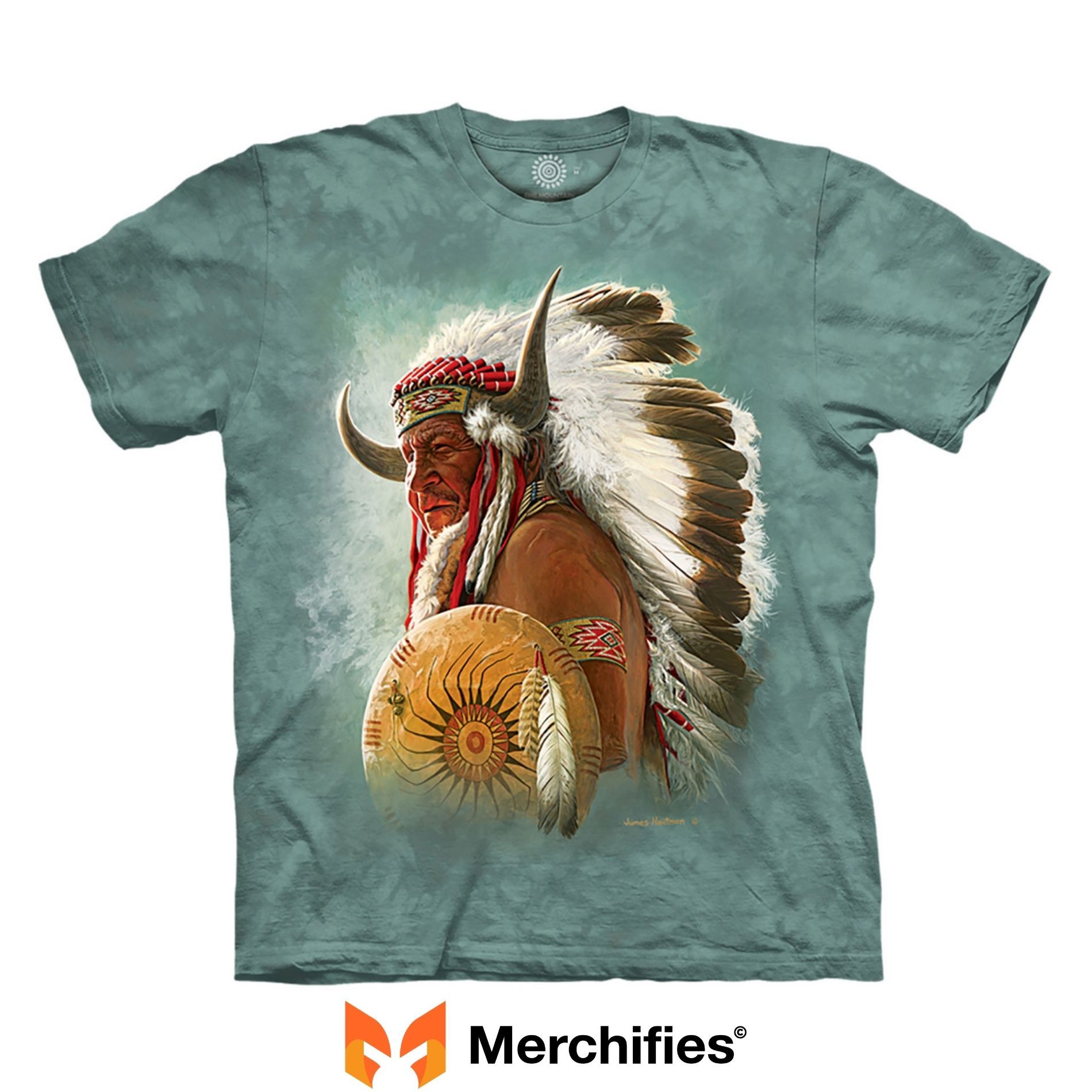
Natural Resources: Materials and Craftsmanship
Indigenous communities were masters of utilizing locally sourced materials. Their ingenuity transformed raw resources into stunning and functional indigenous attire.
Animal Hides: Deer, elk, buffalo, and antelope hides were fundamental. Elaborate tanning processes, often using animal brains or smoke, rendered leather soft, durable, and waterproof. These hides formed the basis for many traditional garments.
Plant Fibers: In warmer regions like the Southwest, cotton was cultivated and woven into intricate textiles. Along the Northwest Coast, cedar bark was processed into soft, wearable fibers for capes and tunics. Other plant fibers from yucca, nettle, and dogbane were skillfully spun and woven using ancient techniques.
Adornments: Clothing was frequently embellished with natural elements. Porcupine quills, carefully softened and dyed, were used for intricate embroidery. Shells, bones, teeth, seeds, and feathers were meticulously incorporated, adding beauty and symbolic meaning.
Traditional Techniques: Craftsmanship was paramount. Weaving, tanning, natural dyeing (using pigments from plants, minerals, and insects), embroidery, and appliqué were highly developed skills, passed down through generations, making each piece of Native American clothing history a work of art.
Function, Form, and Regional Diversity
The forms of pre-contact clothing varied dramatically based on climate, available resources, and cultural practices. While "shirts" as we recognize them were not universal, many garments functioned similarly.
Garments included tunics, ponchos, robes, cloaks, leggings, and breechcloths, all expertly adapted for protection and practicality. For instance, the Plains tribes, with their nomadic lifestyle, often wore buffalo hide robes that served as both blankets and outer garments, frequently adorned with painted scenes or quilled designs. In the Southwest, woven cotton textiles, like the manta, were common, providing protection from the sun. Woodlands peoples crafted deerskin tunics and leggings, often fringed for shedding water. The Northwest Coast peoples, facing a damp climate, wore woven cedar bark capes and tunics, sometimes incorporating elaborate crest designs. The key takeaway is that clothing was not only protective and practical but also visually communicated identity, status, and connection to the spiritual world.
The Transformative Impact of European Contact and Trade
The arrival of Europeans brought about significant shifts in Indigenous clothing, introducing new materials and forms that were rapidly integrated and reinterpreted, profoundly influencing the origin of indigenous clothing designs.
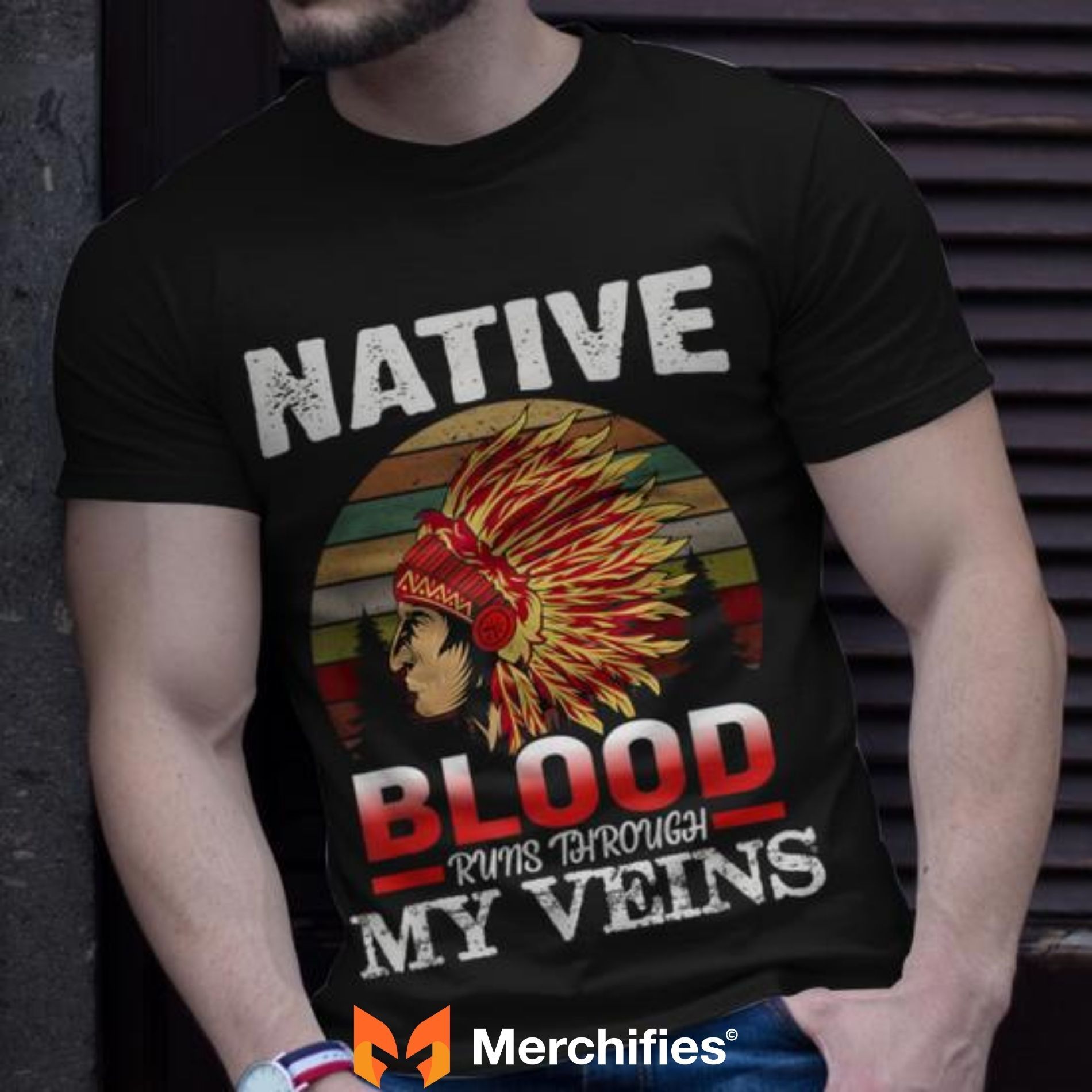
New Materials, New Possibilities
European trade goods revolutionized Indigenous fashion. Wool cloth, particularly broadcloth and blankets, became highly prized. Glass beads, arriving in a dazzling array of colors and sizes, quickly supplanted porcupine quills as a primary decorative medium. Metal buttons and commercially produced cotton fabrics also entered the trade networks. These new materials were not simply adopted but were creatively integrated into existing clothing traditions, offering new textures, colors, and embellishment possibilities that expanded the palette for tribal designs.
Adapting Forms: The Birth of "Native American Shirts"
The influence of European tailoring, with its button-down shirts, vests, and blouses, gradually led to new forms. However, Indigenous adaptation was key. European forms were rarely copied directly; instead, they were reinterpreted with traditional cuts, materials, and embellishments. For example, the early "Calico shirts" or trade cloth shirts often blended European silhouettes with Indigenous fringing, beadwork, and characteristic tailoring, marking a pivotal step in the history of Native American shirts. This fusion demonstrates the adaptive genius of Native artisans, who saw potential in new resources while maintaining their cultural aesthetic.
Preserving Identity Amidst Change
Despite the influx of new materials and forms, the inherent design language remained distinctly Indigenous. As Evelyn Sage explains, the core cultural significance and symbolism embedded in patterns, colors, and arrangements were resilient. Traditional motifs, whether geometric symbols, animal representations, or celestial imagery, were skillfully transferred to new garments, ensuring continuity even as the physical materials evolved. This ability to absorb external influences while preserving an internal cultural identity is a hallmark of Indigenous artistry.
Iconic Native American Shirt Styles and Their Unique Origins
Over time, distinct "shirt" styles emerged, each with its own rich Native American clothing history and profound meaning.
The Plains Indian War Shirt
One of the most recognizable examples in the history of Native American shirts is the Plains Indian War Shirt. Developed from pre-contact hide tunics, these garments evolved with the availability of trade cloth, often made from deerskin or antelope hide, and later, trade wool. They were far more than mere clothing; they were powerful symbols of a warrior's status, bravery, spiritual power, and personal achievements. Design elements typically included long fringes, often made from hair or ermine tails, beaded strips across the shoulders and arms, intricate quillwork, and painted designs depicting battles or spiritual visions. The presence of scalp locks or ermine tails signified valor and prowess in battle.
Ghost Dance Shirts: Symbolism and Tragedy
The late 19th century saw the emergence of the Ghost Dance spiritual movement, a desperate plea for cultural survival and renewal. Central to this movement were Ghost Dance shirts, believed by adherents to offer protection from bullets and facilitate a connection to ancestors. These shirts, often made from simple muslin or cotton, were typically painted with sacred designs rather than intricately beaded. Common motifs included stars, crescents, birds (especially eagles and magpies), and crosses, all symbolizing hope, renewal, and spiritual power. The tragic irony is that despite the deeply held belief in their protective qualities, these shirts did not prevent the devastating Wounded Knee Massacre. Their history serves as a poignant reminder of both profound spiritual belief and immense cultural struggle.
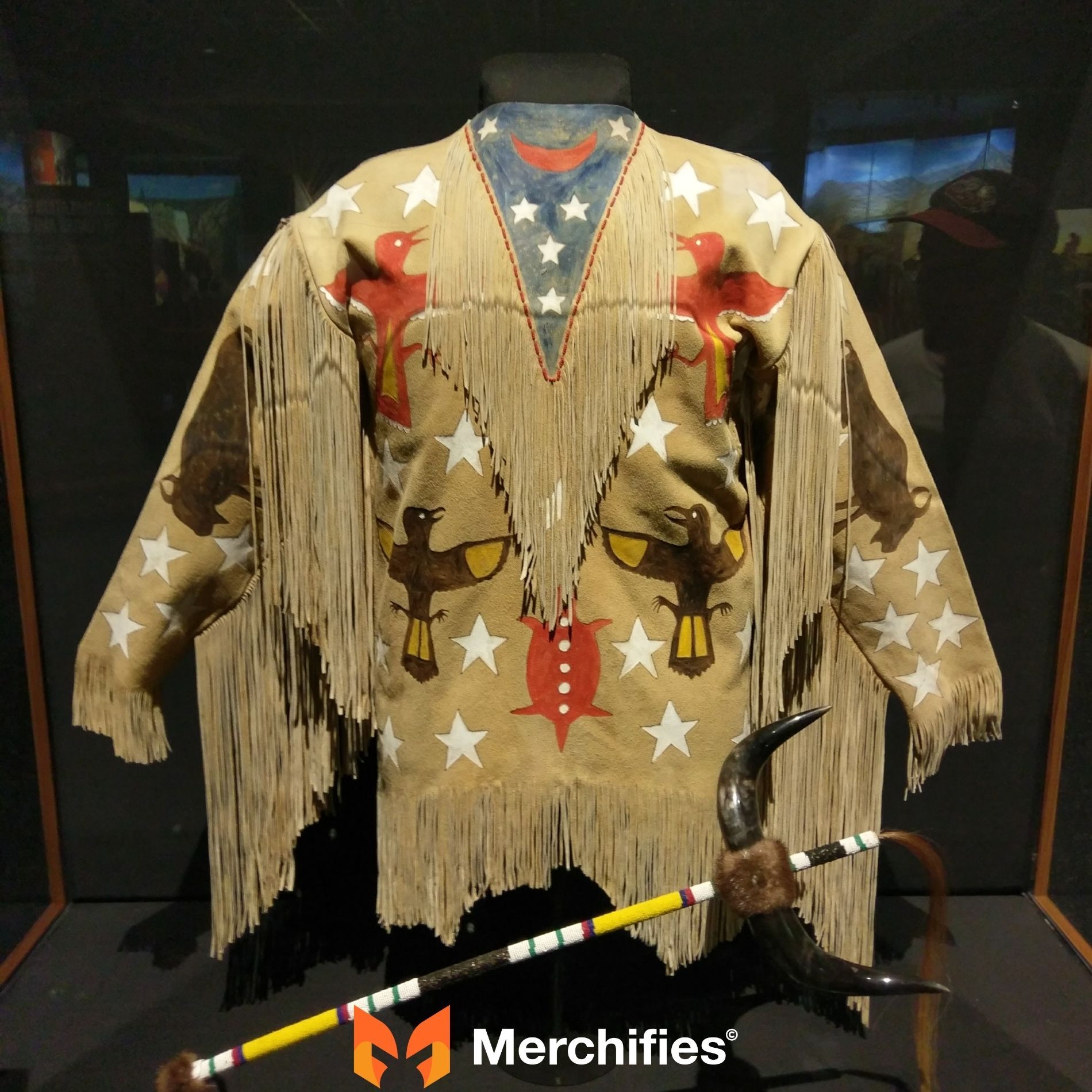
Southwestern Woven Shirts and Pueblo Dress
The Southwest boasts a continuous and ancient tradition of weaving, exemplified by the Navajo and Pueblo peoples. Their woven shirts and dresses, often made from wool and cotton, showcase specific patterns and colors rooted in their environment and cosmology. Earth tones, intricate geometric designs, and the use of natural dyes like indigo and cochineal are characteristic. These garments reflect the deep connection to the land and the sustained practice of ancient textile arts, embodying the origin of indigenous clothing designs in their region.
Other Regional Shirt Forms and Textiles
Beyond these prominent examples, other regions contributed unique forms to the history of Native American shirts.
Northwest Coast: While not strictly shirts, the majestic Button Blankets of the Northwest Coast, often made from trade wool and adorned with mother-of-pearl buttons, represent key design principles found in earlier tunics and robes. These blankets prominently display ancestral crest designs, signifying clan lineage and spiritual power.
Eastern Woodlands: Peoples of the Eastern Woodlands developed elaborate ribbonwork shirts, frequently crafted from trade cloth. These garments feature intricate appliqué designs created by cutting and layering colorful silk ribbons, forming complex geometric or floral patterns. These ceremonial clothing items are vibrant expressions of cultural identity and artistic skill.
The Profound Cultural Significance and Symbolism in Designs
The true essence of Indigenous clothing lies in its profound cultural significance and the rich symbolism embedded in its designs. Each element, from color to shape, tells a story.
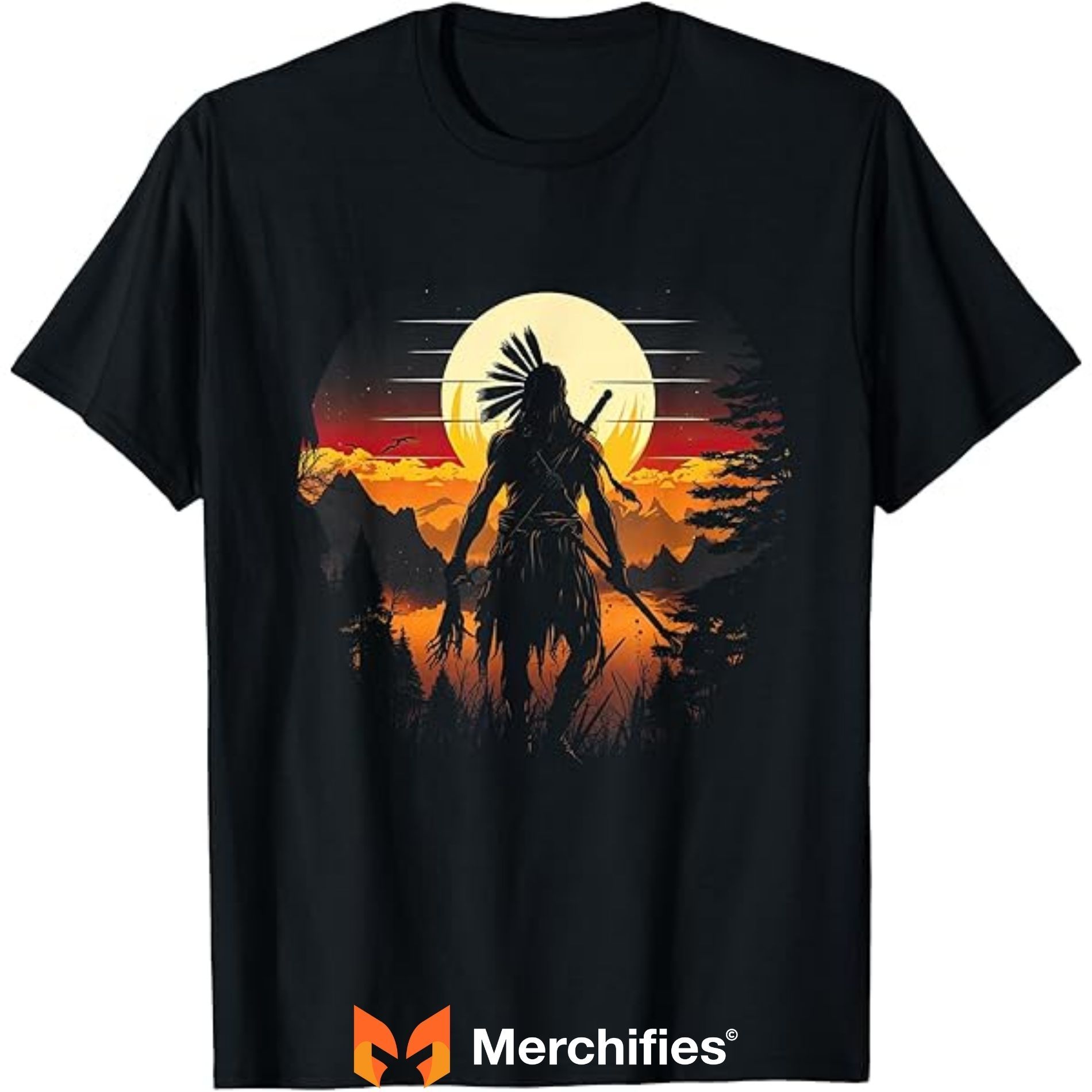
Identity, Status, and Affiliation
Traditional garments were powerful communicators of identity.
Tribal and Clan Identity: Specific patterns, colors, or motifs often identified a person's tribe, clan, or even family lineage. This visual language was crucial in large gatherings or trade events.
Personal Status: Clothing could reflect an individual's achievements as a warrior, hunter, or healer, or denote leadership roles, wealth, and spiritual wisdom.
Ceremonial Roles: Distinctive attire was essential for specific rituals, dances, or ceremonies, distinguishing participants and signifying their roles within the community.
Spirituality and Protection
Many tribal designs carried deep spiritual meaning, offering connection and protection.
Animal Motifs: Representations of animals were common, symbolizing a connection to animal spirits, embodying their power, characteristics, or serving as personal totems.
Cosmological Symbols: Designs often incorporated elements of the sky and cosmos, such as stars, sun, moon, and thunderbirds, representing worldview, creation stories, and spiritual beliefs.
Protective Charms: The incorporation of sacred items, often sewn directly into garments or worn as attachments, was believed to provide spiritual safeguarding and good fortune.
Narrative and Storytelling
Indigenous clothing designs were also living narratives.
Designs as Visual Histories: Garments could document significant events, family lineages, or individual journeys, serving as wearable histories.
Passing Down Knowledge: Through their creation and wearing, designs served as powerful tools for teaching cultural values, traditions, and spiritual knowledge across generations.
Contemporary Indigenous Fashion: Revitalization, Innovation, and Respect
Today, Indigenous fashion is experiencing a vibrant resurgence, fusing traditional aesthetics with contemporary styles. This movement is a testament to the ongoing resilience and creativity of Native peoples.
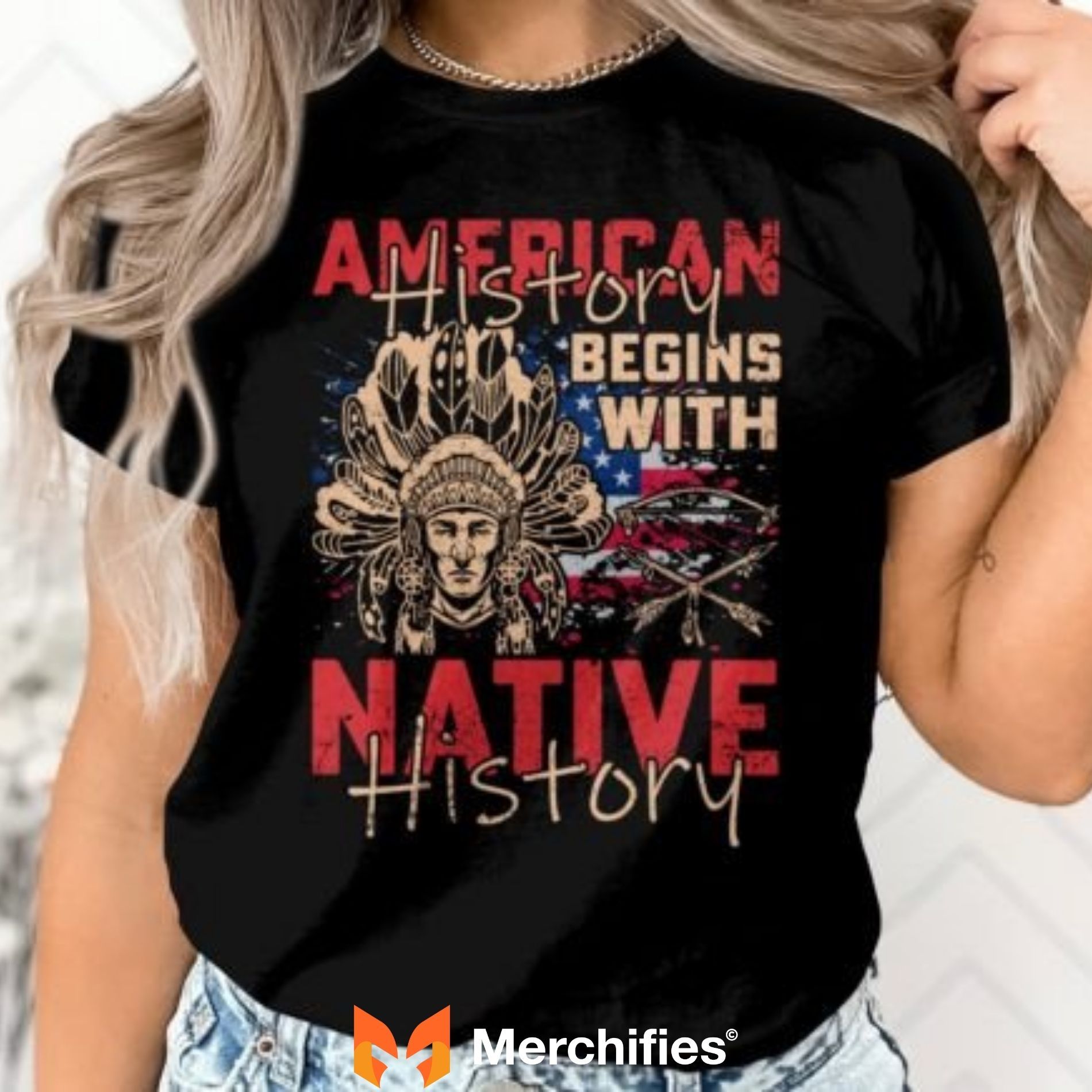
Reclaiming and Modernizing Heritage
Indigenous designers are leading a powerful movement to reclaim and modernize their heritage. Visionaries such as Bethany Yellowtail (Crow/Northern Cheyenne), Jamie Okuma (Luiseño/Shoshone-Bannock), and Sho Sho Esquiro (Kaska Dena/Tahltan) are examples of Native American fashion designers who ingeniously incorporate ancestral patterns, materials, and stories into modern silhouettes, creating stunning and relevant collections. These efforts go beyond mere aesthetics; they are crucial cultural revitalization efforts, using fashion to educate, celebrate, and preserve traditions for future generations.
The Fine Line: Cultural Appropriation vs. Appreciation
As interest in indigenous clothing designs grows, it's vital to understand the difference between cultural appropriation and appreciation. Appropriation occurs when elements of a culture are taken without understanding, respect, credit, or compensation, often commodifying sacred or culturally significant designs. This can lead to a loss of meaning, economic injustice for Indigenous artists, and the perpetuation of harmful stereotypes. Promoting respectful engagement means supporting Indigenous artists directly, purchasing from Native-owned businesses, learning about the cultures from which designs originate, and always seeking consent and giving credit. As Evelyn Sage often emphasizes, true appreciation involves deep respect and ethical engagement, recognizing the cultural significance behind every design.
Indigenous Fashion as a Force for Sovereignty and Self-Expression
Contemporary Indigenous fashion is a powerful force for sovereignty and self-expression. It highlights the enduring resilience and ongoing creativity of Indigenous peoples. Fashion becomes a platform for political statements, asserting cultural pride, challenging colonial narratives, and showcasing the dynamic evolution of Indigenous identity in the 21st century.
Preserving a Rich Legacy: Why This History Matters
Understanding the history of Native American shirts and the origin of indigenous clothing designs is more than an academic exercise; it's a vital act of respect and recognition.
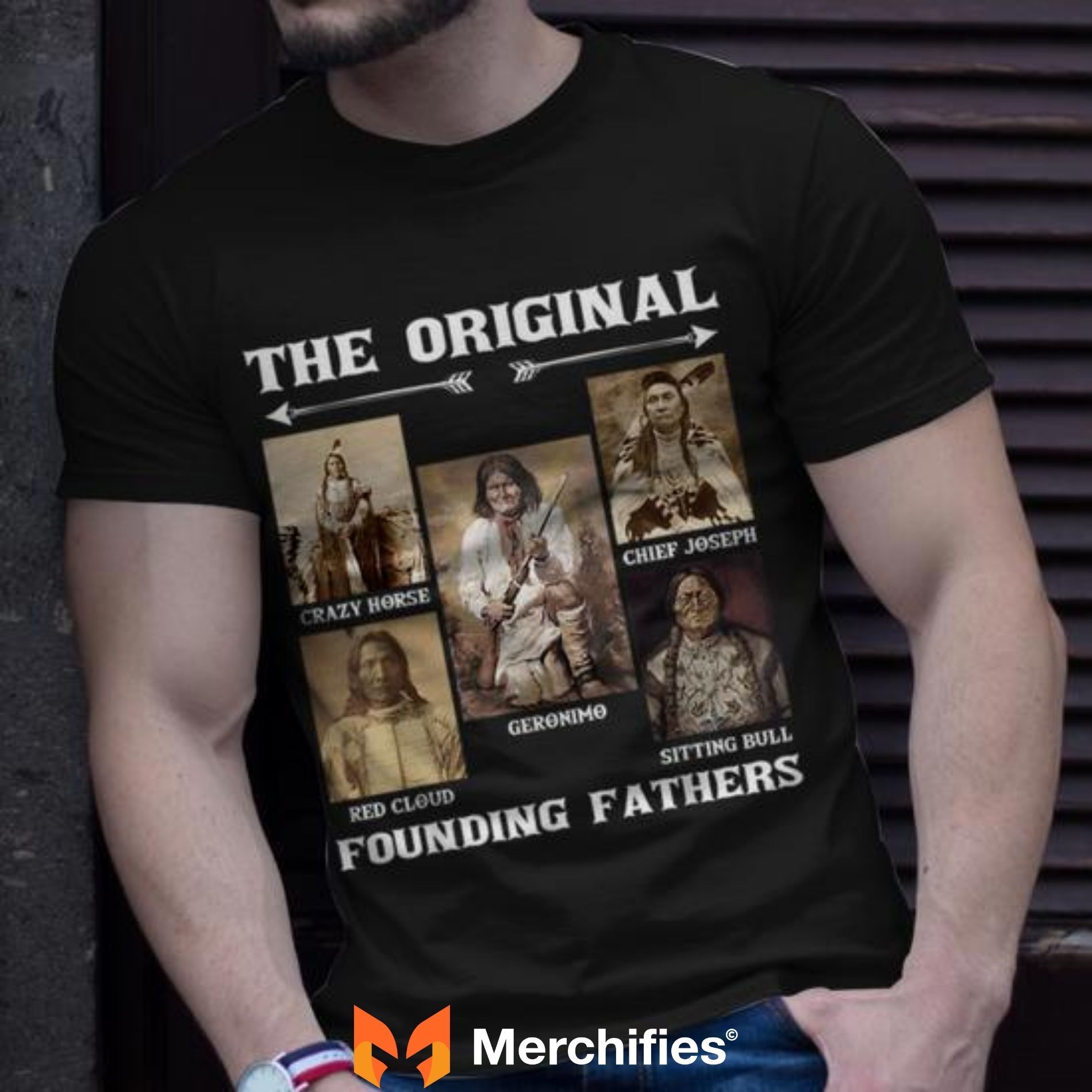
Education and Understanding
Accurate historical representation is crucial. By delving into the authentic stories behind these garments, we challenge stereotypes and promote genuine, nuanced knowledge about diverse Indigenous cultures. This education fosters a deeper understanding and bridges cultural divides.
Celebrating Resilience and Creativity
Acknowledging this history celebrates the incredible resilience and artistic creativity of Indigenous peoples, who, despite centuries of adversity, have maintained and evolved their vibrant artistic traditions. Their ability to adapt, innovate, and thrive is truly inspiring.
Supporting Indigenous Communities
Learning this history also encourages ethical consumption and respect for Indigenous intellectual property. Supporting Native artists and businesses directly contributes to the economic well-being and cultural continuity of Indigenous communities.
Frequently Asked Questions (FAQs) About Native American Shirts & Designs
What materials were traditionally used for Native American clothing?
Traditionally, Native American clothing utilized a wide range of natural materials, including animal hides (deer, elk, buffalo), plant fibers (cotton, cedar bark, yucca, nettle), and adornments like porcupine quills, shells, bones, teeth, and feathers.
What do Native American clothing designs and symbols represent?
Native American clothing designs and symbols are deeply meaningful, representing tribal identity, personal status and achievements, spiritual beliefs, connections to animal spirits, cosmological views (stars, sun, moon), and narratives of family history or significant events.
When did Native Americans start wearing "shirts" as we understand them?
Native Americans began adapting European-style "shirts" from the 17th to 19th centuries, following contact and trade. Prior to this, garments like tunics, ponchos, and robes served similar functions but lacked tailored sleeves and buttoned fronts.
How can I identify authentic Native American-made clothing?
To identify authentic Native American-made clothing, look for direct statements from the artist or seller, tribal affiliation information, and certifications like the Indian Arts and Crafts Act. Purchase directly from Native artists, tribal markets, or reputable Indigenous-owned businesses.
What's the difference between cultural appropriation and appreciation in Indigenous fashion?
Cultural appropriation involves taking cultural elements without understanding, credit, or compensation, often leading to commodification and disrespect. Appreciation, conversely, involves respectful engagement, supporting Indigenous artists, learning about the culture, and giving proper credit.
Where can I learn more about specific tribal clothing designs?
To learn more, seek out resources from specific tribal cultural centers, museums with strong Indigenous collections (like the National Museum of the American Indian), academic texts, and directly engage with and support Indigenous artists and educators.
Conclusion: A Tapestry of Culture, History, and Enduring Spirit
The journey through the history of Native American shirts and the origin of indigenous clothing designs reveals a tapestry woven with threads of innovation, resilience, and profound meaning. From the ingenious use of pre-contact natural materials to the transformative integration of trade goods and the vibrant expressions of contemporary Indigenous fashion, every garment carries deep significance. These are not merely pieces of fabric; they are living expressions of rich cultures, histories, and an enduring spirit that continues to evolve and inspire. As I, Evelyn Sage, have shared throughout this exploration, understanding this history is crucial to appreciating the artistic brilliance and cultural depth of Indigenous peoples, honoring their past, and supporting their future.